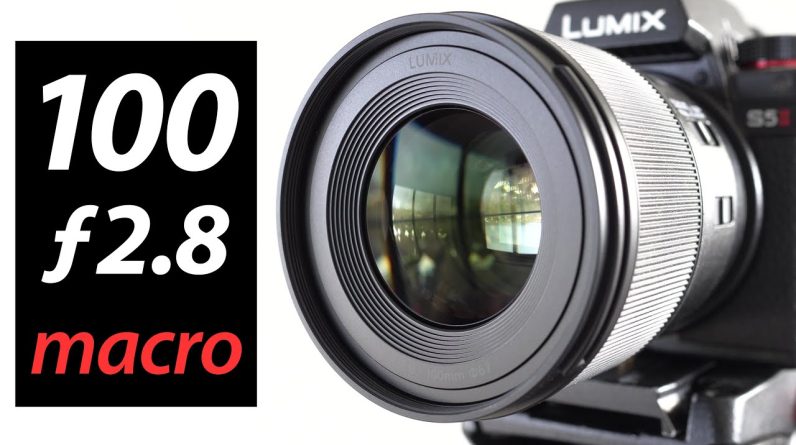[Music] Hi I'm Dustin Abbott and I'm here today For the review of another Power Station This is the apar P010 this unit has a 512w lipo 4 battery with an 800 W Inverter excellent UPS function with Just a 10 millisecond turnover and it Retails right now for under $500 Canadian making this a really great Value particularly for a certain Application which is what I'm personally Using it for the question is is this the Kind of unit that you should be looking For as well hopefully I can help you to Answer that question as we dive in and Starting by looking at the overall Feature set that is here as noted this Is a 512w hour lithium iron phosphate Battery that is the kind of the most Recent Battery Technology and it's Really favored in these kind of units Now because it holds up really well over The long haul it can do a lot of char Cycles in this case it's rated at 3500 Char Cycles to 80% battery capacity so That's pretty much 10 years of daily Full discharges and recharges meaning That you're going to get a lot of Long-term use out of that and that is Reflected by the way in the actual Warranty here which is warrantied if you Register it it's warrantied up to seven Years which is really really impressive
For something like this it has a smart Battery management system that helps to U protect the battery and also to make Sure you're getting the maximum Performance out of it it gives 800 watts Of pure sine wave power with a few extra Little tricks up the sleeve that we'll Note in just a moment you can see that The overall dimensions is this is kind Of a moderately size it's not the Smallest units but it's a lot smaller Than what some of them come it's a Fairly portable unit weighing in at 6 And a half kilos or just right over 14 Lbs meaning this is a good unit to bring Along camping applications like that Where it's not going to be too bulky or Too heavy to bring along the dimensions Here are 272 mm and its length uh 230 mm In its depth and 315 mm in the overall Height and so that's 10.7 by 9 right Over 9 in by 12.4 in one thing that I Don't love we have a fixed handle which Is why the unit's height is measured a Little bit higher because there's Nothing to fold over and here at the top We don't have any kind of a charging Wireless charging pad which is something I do miss as a part of it now one thing That the other thing here on the front Is that after we have powered it on we Do have you have to hold about 3 seconds For it to power on we do have a LED Light and in this case it's only one
Setting just as far as output and then Kind of an SOS type pattern if uh for Emergency Situations now unlike the recent bluetti Unit that I have reviewed I don't like The overall button layout here as well Because they're kind of all over the Place we've got a button here button Here button here button over on the side For the AC output and so we've got four Different locations for the actual Buttons plus a fifth location here for The overall power I like the the better Organization by Blue Eddie recently Where they're putting all the batteries Together and also having them light up Once they're actually active and so you Know what's on what's off that's Something that is missing here so as far As the included ports as already noted There is no Wireless Pad but the other And let's get the other limitation out Of the way right off the bat and that is That there is only one AC outlet and I'll be Frank this is the first of these Units that I've seen with that few I've Seen plenty with two but never only one Before and so that is definitely a Liability and so there is one 120 volt Grounded plug which is ready for 800 Watts as noted previously you know they Say 800 watts total but when there's Only one plug that's pretty obvious now What we do have however is an abundance
Of USB ports and they tend to be really Really good ones which what helps to Lead me towards my final conclusion here In just a moment and so we actually have Two of uh usba a ports but they're not Just usba a ports these are qc3.0 and so That's quick charge 3.0 and they're Rated at 18 Watts which is a lot of Power power output for a USB usba a port And then we also have a one 100 wat Power delivery USB c c Port along with Two uh 20 watt uh Power delivery USBC Port so we have a total of three USB C2 Usba which is obviously very handy we Also have the 12vt uh 10 amp Car Outlet There we also have a secondary DC 12vt Output here in the front as well well so A little bit more on the DC front this Is actually in many ways it's a better DC unit than what is it is an AC unit For obvious reasons now one thing that I Do appreciate is that there is no External power brick and that is what Helps it to have great UPS function that We'll get to in just a second but you Have the traditional kind of computer Looking type plug there on the side and Then also as another input we have an Mppp style input for solar and or Charging from the car there is no Grounding connector that I have seen Anywhere on that what we do have also is A good clear to read uh screen with Percentage read readouts for output and
Input along with some other messages That are shown on there and so some nice Functionality in that front there's no Wireless functionality that I'm aware of No Bluetooth or Internet capabilities Wi-Fi capabilities to it and so you're Going to be using this unit handson so You can do a fast charge of up to 600 Watts now that is a combination of AC And solar you can charge it in just 1 Hour under optimal conditions anytime You talk about solar you're talking About rather than a fixed figure it's a Moving Target obviously probably more Practical in most situations you can Charge at a fast rate of up to 400 watts Which means that you can charge from AC Alone you can charge in about an hour And a half now I will note that it does Kind of tune things and so it will Charge at 400 watts kind of the turbo Mode up to 85% at 85 5% charge it Throttles down to 200 watts and even a Little bit lower as it gets towards 100% And that is to help the longevity of the Battery life itself so it's actually Smart from from that perspective now Solar input and also then car input car DC input is going to be limited at 200 Watts through the port there and so that Means it's going to take you about 3 Hours to charge via solar under you know More optimal conditions if you're less Optimal it could be 3 and 1 half up to 4
Hours for charge charging there now the UPS mode as already mentioned is really Really handy here and so in UPS mode it Will actually allow a a flow through of 800 watts in and 800 watts out and so It's it's not just charging the battery It's just pass through and and so then When you change over it will change over At 10 milliseconds or less and so that Gets me to kind of the primary Application that I've been using I've Actually been using this unit for about 3 months at this point and using it Specifically as the PS for my computer Workstation which is a little on the uh The draw can be a little on the heavy Side sometimes for just the typical UPS Units this obviously gives me sufficient Power but also it's a really handy thing To see there for one thing it's given me An an idea of the actual usage actually It's helped me engaging when to go into Sleep mode when to do permanent shutdown Because I can actually see how much Phantom power is being drawn by my Workstation on top of that I also love Having the access to all of those Charging port right there which just Means rather than dealing with other Bricks or adapters you can just charge Things right from that so it's actually A really handy thing to have on the Corner of my particular workstation and For my uh my computer workstation to all
Be powered through and there's a lot of Things obviously I run a dual monitor Setup a very you know powerful uh Workstation for editing and all of those Things and so I found it to be really Really useful for that kind of Application so let's talk about some of The tests that I ran with it so first of All I like to use um in this case I Didn't try to use my full-size Kettle Though as I'll get to in a moment it Probably would run it though in a Limited application but instead because It's rated at 800 watts I used my 900 Watt uh portable tea kettle and it ran Without issue it pulled kind of its Standard draw right at about 600 watts And it brought the water to boil in About 5 minutes so not fast but that Kettle is a little bit slower than my Other tea cutle because it does draw you Know less less current and so it used About 12% of the battery just to give You an idea of actual battery usage now Things got interesting when I thought Okay let's try something that's a little Bit more powerful because I was Suspecting something uh was going on There and so I grabbed a blow dryer that Is rated at 8 1875 watts and so I Thought there's no way it's going to Trip this it's going to shut down I Turned on the blow dryer and it worked And it kept working in fact it ran at
850 Watts range in that range at a very Stable rate which is obviously more than What this is rated for putting out there Was obviously a little bit more in the Tank up above that 800 watt inverter Range so I was curious then so I I went To a powerful two 2,000 watt unit that I Have and and I ran the same blow dryer And I got a little over 1,400 watts of Draw so blue edti actually has what they Call a lift mode and in this case this Doesn't advertise having something like That but clearly what it does is that if It is trying to power something certain Things that are drawing more power than What it is capable of putting out it Will actually throttle back and run Things with the battery management at a Stable rate that it can sustain so it's Not giving full power and I did note Testing side by side that the the blow Dryer was not blowing at as high of a Motor speed what is what it would um When I hooked it up to the more powerful Unit or straight into AC so it was Running out a Throttle Down level but it Was running in a stable fashion now I Will note with something like that you Need to use caution there are things Like for example like my kettles most Things with a heating element like that It's it's no problem if you run them at A lower current they'll just draw less And it'll take longer to achieve your
Desired end but it will do it just fine Things that have more complex Motors Refrigerators you know air conditioners Things like that you probably shouldn't Run them that way because it is probably Going to uh just degrade the overall Life of the motors it probably won't fry Them outright but it will degrade that And so you know you wouldn't want to do That unless you're in an absolute Emergency so just a little caveat on That for the most part I would stick With things that are rated that this can Actually run in a stable fashion now I Also tested two different blenders that I have one rated at 1,000 Watts one at 1100 watts and in both cases they ran Fine and the th000 watt uh blender I've Seen before that it typically will Actually run it's rated 1,000 watt but It typically runs a little bit cooler Than that in the 650 or so range and so It had no problem powering that my more Powerful one I have seen it draw more But in this case the I wasn't doing like A huge heavy smoothie load and so I Don't think it had to work quite as hard And so it was also able to run stable And so I had zero issues with either of The blenders so it's pretty encouraging That most of the things that I typically Try to run with something like this it Actually could run which is better than A lot of units used to be I also noted
In a practical application of actual use Over the past 3 months that there have Been multiple power outages during that Time brownouts or whatever where my PC Was on things were running and it Switched over instantly there was no Loss of data nothing powered down and so It did work perfectly as a UPS unit Which again is my primary application For it now in terms of charging smaller Things you know phones tablets cameras Things like that that's fairly Effortless at this point and as you can See you can recharge those things many Times over and so if you're just going Out camping or you know in a power you Power outage just trying to keep some Basic Electronics powered even running Like your home Wireless Route or things Like that these unit this size is going To do that quite well for a a fairly Good period of time so let's talk about Some things I like and some things I Don't like as we wrap things up so Things that I like is as noted I really Like the good number and the variety of The DC ports particularly the variety of Usba and USBC ports and I appreciate That they tend to be better than average In terms of their power output I really Like the UPS mode it actually works Really really well on here and of course The fact that there's one input and one Output as far as AC goes uh makes it
Just kind of a natural Link in the chain Without having you know wanting to Actually put other things onto AC on it It really just kind of works for that One application and then I use it Elsewhere as more of a dcit Just a power bank and that that sense I Do think that this is for this price Point this is a very powerful inverter That could run more than what I expected It to be able to run I also appreciate The fact that we've got the internalized AC adapter so no external brick making It even more portable I also noted Having basically sitting right next to It for months is that this thing is Really really quiet it's a very good Desktop companion um even when the fan Comes on which is very rare it runs at Less than 60 DB and most of the time It's essentially silent the other thing That I did note is that over the time if It's just doing power pass through just In the case of you know maybe running The LCD screen just that basic thing Over a long period of time the power Will slowly drop uh and I'm talking About weeks until you get down to about 90% And at 90% it actually will charge For a while and bring itself back up to 100% but for the most part it's not Using any power it's just passing it Through through and so that's a really Nice and clean performance there so
Those are the things that I like the Things that I don't like I don't like The artificial Li limitation of having Only one AC port so if you're using this During a you know a power outage or Using it by traveling and wanting to Hook up multiple things you're probably Going to end up using resorting to using A power bar and you know that's one of The things I think we're trying to avoid In situations like this so I don't like That I wish that there was the wireless Charger again this being kind of a Desktop unit is the way that I'm using It I really like having that as an Option to throw a phone on there and to Get some charge in that way I also don't Like the way that the power buttons are Spread out and in particular that comes To the AC uh adapter side on the AC Output it's way over here on the side And so it's I find it kind of hard to Reach to and so you have to kind of find It in some situations by feel because It's not front based and so typically When you're facing it that's what it's Going to get the most light and the most Visibility and so if you're have things Hooked up and you're trying to reach at That you're trying to find that and then Turn it on and the those not lighting up To give you a kind of a positive Affirmation that they're running those Are things that I wish would change and
So my conclusion is is I like this best As a workstation UPS the great variety Of USB ports makes it a great place to Charge things and to know that I'm Getting clean power to my PC and Monitors and all of that and then also To know that if there's a power outage I'm not going to lose my my important Work and I'm going to have plenty of Time to either continue to work or to Under my control shut down the Workstation without having to have it Just crash because of a power outage now The fewer AC ports does make it less Practical than some other competitors When it comes to just a backup unit for A power outage type situation and so you Might want to evaluate for that I think That it's a very strong value at under $500 Canadian dollars and roughly the Same I think you can get it even cheaper Than than that in the US market Depending on the sale price but that's Very strong value for an 800 watt Inverter it can actually run a fair Number of things and so that makes it a Really strong value for that kind of Application as well this doesn't Necessarily have a lot of bells and Whistles in terms of you know Wireless Connectivity and things like that but it Is a solid unit and one I think that in Many ways makes more sense as an indoor Unit it's not particularly weather
Sealed that I know of and so I really Like it for the application I'm using it There are other units that I like better For more outdoor typee applications I'm Dustin Abbott and if you look in the Description down below you can find Linkage to my text review and also some Buying links if you want to get more Information or are interested in Purchasing if you haven't already please Like And subscribe thanks for watching Have a great day and let the light [Music] In






